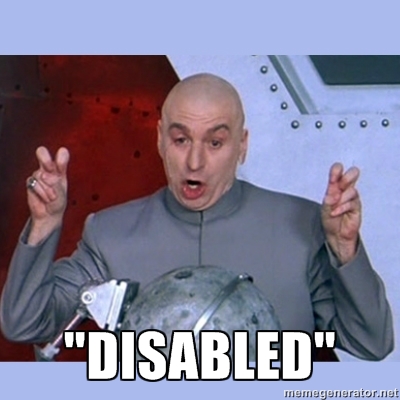Your humble blogger brings you news, dear readers, both good and bad. The good news first – if you’re reading this, the Mayan Apocalypse has been cancelled, and now joins the ranks of other end-of-the-world myths, including Zombie outbreaks and the cataclysmic destruction of the world’s coffee supply (Zombies one can survive; coffee shortages? Not so much). The bad news is, we still have applicants claiming they were fired because of their alleged workers’ compensation injuries, and not because they were poor quality employees.
I submit for your review the case of Lucas Marinics v. Gilmore Heating & Air Conditioning, a recent panel decision. Applicant’s employment was terminated shortly after his industrial injury to the shoulder, so a Labor Code section 132a claim was filed.
Well, the defense put on its witnesses – employers managers and applicant’s supervisors testified to the fact that they had already planned to terminate applicant’s employment because of poor quality of work, but were delaying due to a temporary work increase. So, at the time applicant was injured, his employer had already planned to fire him like a watermelon store might fire Gallagher.
Applicant’s retort was “you lie” and even cited a prior determination with respect to the issue of temporary disability, reasoning that since the insurer could not terminate his temporary disability benefits due to the termination of employment, he was home free on the 132a.
Well, the workers’ compensation Judge was not buying it – he observed the testimony of the managers and found them to be credible. With respect to applicant’s argument applying the finding on the temporary disability issue, the WCJ noted that the prior determination was that the insurer had failed to show good cause for the termination, and thus did not carry its burden of being relieved of paying temporary disability benefits. The WCJ ordered that the applicant to take nothing on his 132a claim.
Not discouraged, applicant sought reconsideration, arguing that the defendant’s witness testimony was not credible. The WCAB, in a split panel, denied reconsideration, reasoning that the WCJ is best suited to determine credibility and had found the defense witnesses credible. However, there was a dissenting voice in this one – Commissioner Caplane dissented, reasoning that the facts here are in favor of a finding of 132a violation.
Commissioner Caplane’s dissent makes a very interesting point – defendant claimed that applicant’s employment was to be terminated, but the month was far too busy and defendant’s disruptive behavior and attitude problems were being tolerated because of the large work load. To quote the commissioner, “[after the injury i]t was still July, it was still the busy season, defendant still had too much work to do, applicant was still difficult to get along with, but one thing changed.” (Emphasis original).
Defendant was going to fire applicant, but didn’t because there was too much work to do and applicant could do the work. The facts make it look like defendant fired applicant at that time because of his injury, even though he would have been fired later for his conduct.
Now, my dear readers know that their humble blogger is no poster boy for the CAAA, but this is a valid point. Ultimately, the WCJ’s opinion should have been upheld – he was there, he observed the witnesses testify, and, being a seasoned WCJ, he was not some naïve babe in the woods to be fooled: the witnesses seemed credible and the WCJ’s findings were legitimate.
But, this can still serve a lesson to all of us – with the ease of an e-mail, defendants could have simply shown at trial that they had already planned to fire applicant on the day of his injury. In fact, had this documentation existed, it would be a reasonable line of investigation to find out whether applicant had somehow found out about this plan, and decided to induce, fake, or report an injury on that date to avoid the termination of his employment.
In other words – don’t discriminate against employees for claiming workers’ compensation benefits; but also, keep good notes!



